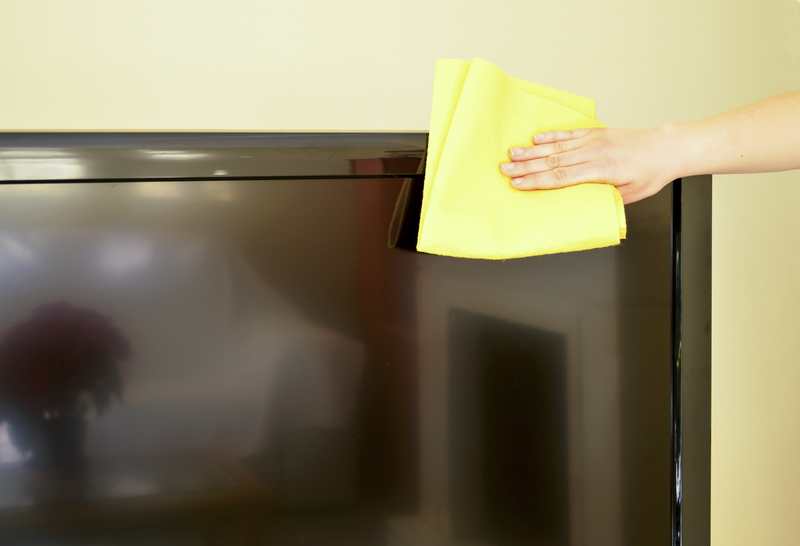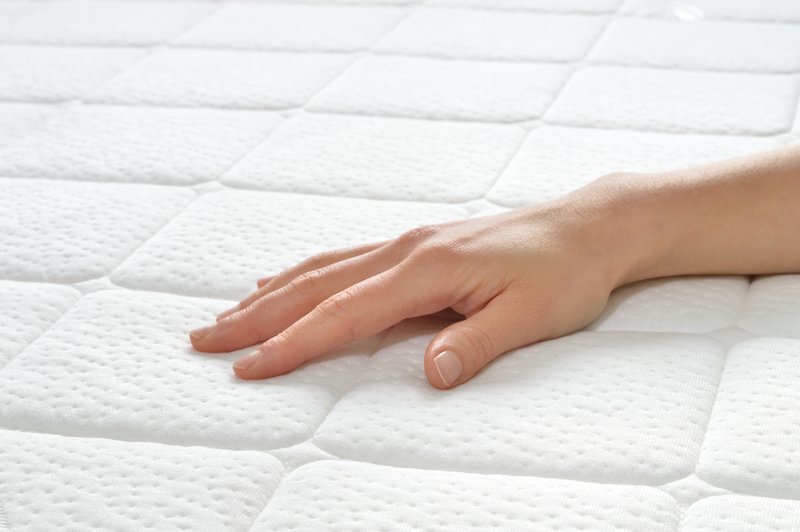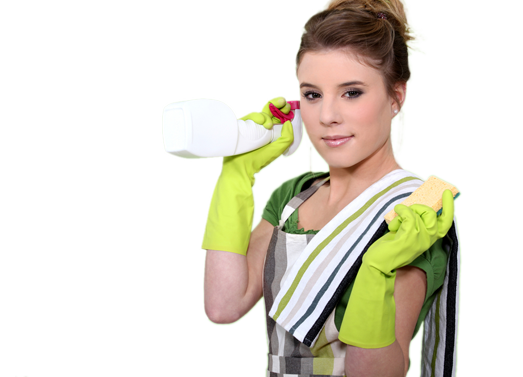Expert Advice for Cleaning Burnt-on Residue on Your Stovetop
Posted on 26/08/2025
Expert Advice for Cleaning Burnt-on Residue on Your Stovetop
Burnt-on residue on your stovetop can be a stubborn, unsightly problem. Whether it's a quick splash from last night's dinner or layers of cooked-on grime, removing these residues is essential for both hygiene and aesthetics in your kitchen. In this expert-approved, in-depth guide, you'll learn cutting-edge techniques for cleaning burnt-on residue from your stovetop, discover which products and natural remedies work best, and get insight into preventing future build-up. Bring back your cooktop's shine and efficiency with these proven methods.
Why is Burnt-on Residue So Difficult to Remove?
Burnt-on residue results from food, oils, and sauces being exposed to high heat for extended periods, causing them to carbonize and adhere tightly to your stovetop surface. The problem is twofold:
- Chemical bonding: High temperatures break down food compounds, which then react with stovetop materials and bond tightly.
- Layers of debris: Repeated spills and infrequent cleaning create multiple layers of burnt-on grime, making the cleanup more challenging.

Expert Tips for Cleaning Burnt-on Stovetop Residue
Before you begin, always check your stovetop manufacturer's cleaning instructions. This ensures you don't void warranties or damage delicate surfaces when tackling stubborn, cooked-on messes.
Gather Effective Cleaning Supplies
Start with the right tools and cleaning agents to maximize your results:
- Non-abrasive scrub pads or sponges
- Baking soda
- White vinegar
- Lemon juice
- Commercial stovetop cleaner (for glass, ceramic, or gas cooktops as appropriate)
- Plastic scraper or spatula
- Old toothbrush
- Microfiber cloth
- Rubber gloves
- Bowl of warm, soapy water
Using the correct supplies helps prevent micro-scratches and further burnt residue accumulation.
The Step-by-Step Process for Removing Stubborn Burnt-on Grime
Here's a comprehensive, stepwise method for cleaning burnt-on residue off your stovetop, whether it's made of glass, ceramic, or metal:
1. Allow the Stovetop to Cool Completely
2. Remove Burner Grates and Any Loose Debris
- If you have a gas stovetop, carefully lift off the burner grates and set them aside.
- Brush away or wipe any loose crumbs, food particles, or ash using a dry towel or soft brush.
3. Soak Burnt-on Areas to Loosen Residue
Pour a small amount of hot, soapy water onto a clean sponge or directly over the affected areas. Let it sit for at least 15 minutes. This step softens tough, burnt stains and makes scraping easier.
4. Use a Plastic Scraper to Gently Lift Residue
Carefully use a
- For glass and ceramic tops: Only use tools designed for these surfaces to prevent scratches.
- For metal stovetops: A plastic or wooden spatula is best - avoid steel wool unless directed by the manufacturer.
5. Apply a Baking Soda and Vinegar Paste
In a small bowl, mix:
- 3 tablespoons baking soda
- 1 tablespoon white vinegar
The mixture will fizz slightly, indicating the chemical reaction that helps lift burnt-on gunk. Spread the paste evenly across the affected areas and let it sit for up to 30 minutes for maximum effect.
6. Gently Scrub and Wipe Clean
Using a non-abrasive pad or soft brush, gently scrub the softened residue. Wipe with a damp microfiber cloth, rinsing frequently. Repeat until all the burnt-on mess is gone.
7. Buff and Shine
Finishing touches make a big difference. Use a clean, dry microfiber cloth to buff the stovetop until it's shining. For glass or ceramic cooktops, a few drops of rubbing alcohol on the cloth can add extra sparkle.
Natural Remedies for Cleaning Burnt-On Stovetops
Many household ingredients are proven burnt-on residue removers. If you prefer eco-friendly cleaning, try these:
- Lemon Juice: The citric acid in lemon breaks down tough grease and burnt proteins. Squeeze fresh lemon juice over the area, let sit, and then wipe clean.
- Baking Soda Paste: Make a thick paste with baking soda and water. Apply it liberally, let rest for 30 minutes, and scrub with a damp sponge.
- White Vinegar Solution: Mix equal parts white vinegar and water in a spray bottle. Mist the stovetop, especially over hardened residue, allow it to soak in, and wipe with a soft cloth.
- Salt for Abrasion: For stubborn residue, sprinkle coarse salt on the burnt spots before scrubbing with a damp sponge. Salt acts as a gentle, natural abrasive.
- Hydrogen Peroxide: For extremely tough stains, apply a few drops and let sit for 5 minutes before scrubbing. Always rinse thoroughly afterward.
How to Clean Burnt Residue on Specific Stovetop Types
Gas Stovetops
- Remove grates and burner caps. Soak them in hot, soapy water for 20-30 minutes, then scrub clean.
- Use a toothbrush to clean around burners and in crevices.
- Dry thoroughly before reassembling.
Electric Coil Stovetops
- Unplug and remove coils. Clean surface beneath the coils with a damp cloth.
- Wipe the coils gently--never submerge them in water.
- For stubborn spots, use a mild paste of baking soda and water, then wipe dry.
Glass or Ceramic Cooktops
- Never use steel wool or other abrasive scrubbers.
- Apply commercial glass cooktop cleaner or baking soda paste, then use a dedicated glass scraper at a low angle.
- Buff with a dry microfiber cloth for a streak-free finish.
Professional-Grade Stovetop Cleaning Products Worth Considering
- Bar Keepers Friend Cooktop Cleaner: Specially formulated to tackle burnt-on residue without scratching delicate surfaces.
- Weiman Glass Cooktop Cleaner: Highly rated and effective for glass and ceramic stovetops.
- Scotch-Brite Non-Scratch Scrub Pads: Sturdy yet gentle scrubbing pads for persistent stains.
- Magic Erasers: Useful in lifting deeply embedded stains and marks--ideal for heavy-duty jobs.
Always follow product instructions and patch-test on a small area before applying to the entire surface.
Common Mistakes to Avoid When Cleaning Burnt-on Stovetop Residue
- Using abrasive pads or steel wool: These can scratch and permanently damage your cooktop, especially glass and ceramic types.
- Applying excessive force: Scrubbing too hard can break delicate surface coatings.
- Ignoring manufacturer guidelines: Always consult your appliance's manual to avoid voiding your warranty.
- Skipping regular cleaning: Letting food and grease build up over time makes future cleaning much harder and increases chances of permanent stains.
How to Prevent Burnt-on Residue on Your Stovetop
The best way to deal with burnt-on residue is to prevent it from happening in the first place. Here are some simple, expert-recommended strategies:
- Wipe spills immediately: As soon as it's safe and the surface is cool, clean up any food or liquid spills.
- Regular deep cleaning: Set a weekly schedule for a more thorough cleaning session, even if your stovetop doesn't look dirty.
- Use liners: For gas burners, consider stovetop liners that catch drips and are easily removed and cleaned.
- Check cookware: Avoid overfilling pots and pans to minimize overflows and splashes.
- Ventilation: Use your range hood or fans while cooking to reduce the buildup of sticky residue from airborne grease.

Frequently Asked Questions about Cleaning Burnt-On Residue from Stovetops
-
Q: Can I use baking soda on any stovetop type?
A: Yes, baking soda is safe for most stovetops. Apply gently, especially on glass or ceramic surfaces, and avoid abrasive motions. -
Q: How do I know if a commercial cleaner is safe for my cooktop?
A: Check your appliance manual or the product label for compatibility with your stovetop's material. -
Q: What if burnt-on stains remain after several attempts?
A: For deeply set stains, repeat the cleaning process or consider a professional service for heavy buildup. -
Q: Is it safe to use a razor blade on a glass stovetop?
A: Only use razor blades specifically meant for glass cooktops, with great care and at a low angle, to avoid scratches or breakage. -
Q: How often should I deep-clean my stovetop?
A: Every 1-2 weeks or immediately after any major spills. Regular maintenance prevents burnt-on scents and stains.
Conclusion: The Secret to a Sparkling, Residue-Free Stovetop
Effectively cleaning burnt-on residue from your stovetop doesn't need to be a dreaded chore. With the right knowledge, supplies, and routine cleaning habits, your cooktop can remain pristine and fully functional for years. Remember to always prioritize gentle, non-abrasive techniques, follow manufacturer recommendations, and act promptly to prevent residue build-up.
Restore your stovetop's brilliance with these expert tips and enjoy a spotless, efficient kitchen every day!
- Start cleaning regularly.
- Use proven, expert-recommended methods.
- Enjoy delicious meals and a gleaming stovetop!



